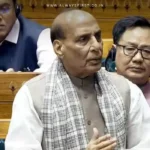
President Joe Biden is preparing to implement a set of tariffs targeting China’s strategic sectors, including electric vehicles (EVs), as his administration seeks to adjust the U.S. approach to trade with China. Unlike the blanket tariff increases proposed by former President Donald Trump, Biden’s plan focuses on specific industries that are integral to the technological and economic competition between the two countries.
According to reports from the Wall Street Journal, the new tariff regime could see rates on electric vehicles jump dramatically from 25% to 100%, indicating a significant escalation in trade measures against Chinese imports in this sector. Additional duties are expected to be placed on other key industries such as batteries and solar cells, while existing tariffs on various other Chinese goods are set to remain largely unchanged.
This move is part of a broader strategy by the Biden administration to address what it views as unfair economic practices and to safeguard U.S. technological interests against excessive Chinese competition. The administration’s approach aims to be more strategic, focusing on sectors that are critical for the future of U.S. industry and technology rather than imposing broad restrictions across all types of goods.
China’s response to these new tariffs is yet to be fully determined, but previous patterns suggest retaliatory measures could be expected, potentially targeting U.S. exports in politically sensitive areas such as agriculture. This could escalate tensions between the two nations, although both sides have recently engaged in more diplomatic interactions to stabilize relations.
The new tariffs are also part of Biden’s larger industrial policy, which includes measures to strengthen domestic industries such as steel and aluminum. These efforts are seen as attempts to shore up political support within key industries and among workers, particularly as Biden prepares for the upcoming presidential election where economic issues are likely to be a major focus.
As the global landscape of trade and technology evolves, the adjustments in tariff policy reflect an ongoing recalibration of U.S. strategy towards China, balancing between economic competitiveness, domestic industrial policy, and the broader geopolitical rivalry.








































Leave a Reply